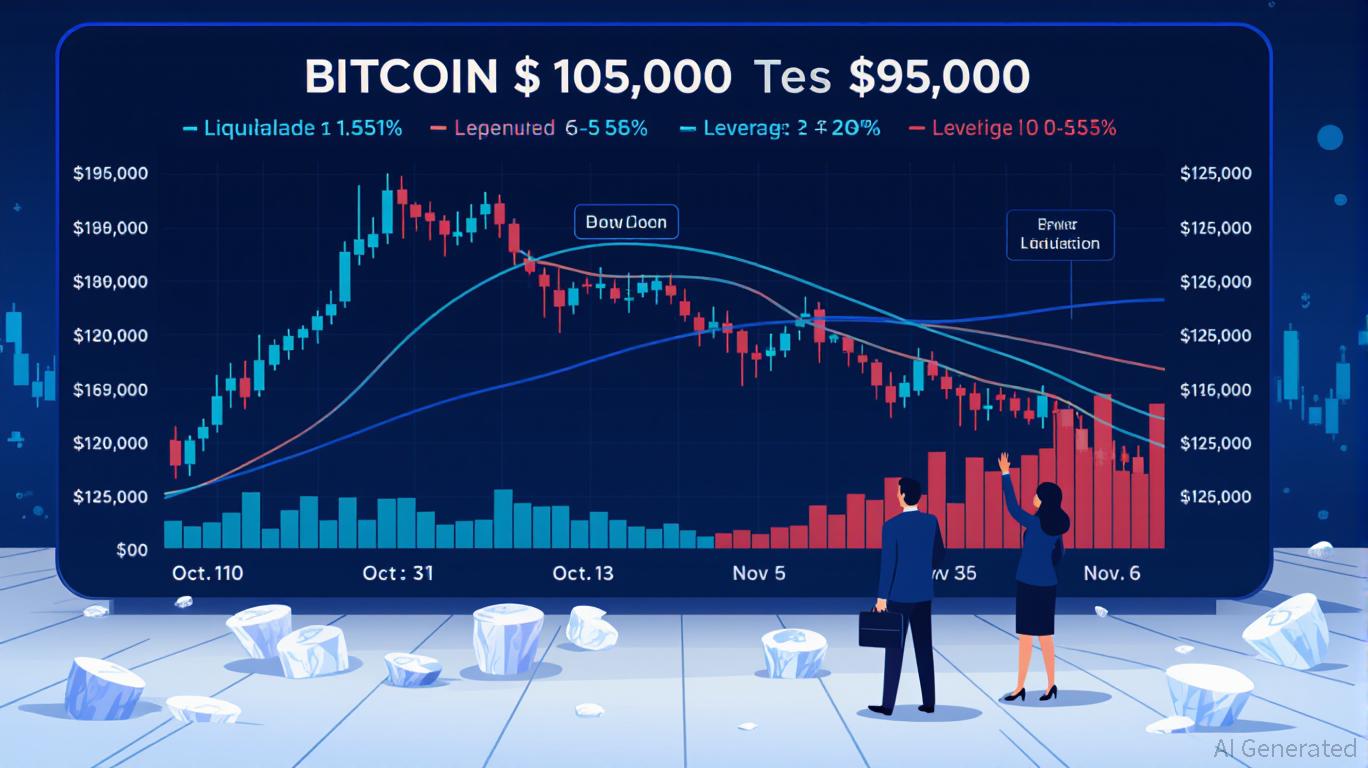Three Countries, Distinct Approaches: APAC's Cryptocurrency Surge Fueled by Varied Strategies
- Japan, South Korea, and India drive APAC's crypto boom, with on-chain transactions surging to $244B by 2024, outpacing North America. - Japan's 120% YoY growth stems from regulatory reforms and XRP adoption, while South Korea's $10K–$1M "professional" trades dominate 50% of volume. - India leads with $338B in grassroots and institutional crypto activity, leveraging fintech integration despite regulatory hurdles like Tax Deducted at Source. - Divergent strategies—Japan's regulation, South Korea's speculat

Japan, South Korea, and India are redefining the landscape of cryptocurrency adoption in the Asia-Pacific (APAC) region, each influenced by unique regulatory policies, market forces, and grassroots enthusiasm. The 2025 Geography of Cryptocurrency Report from Chainalysis reveals that APAC’s on-chain transaction volume soared from $81 billion in July 2022 to $244 billion by December 2024, with these three nations contributing substantially to this expansion. APAC has now emerged as the world’s fastest-growing crypto market, often surpassing North America and second only to Europe in transaction activity.
Japan’s cryptocurrency sector experienced a 120% annual rise in on-chain value received, overtaking Indonesia, South Korea, and Vietnam. This surge is largely due to regulatory advancements, such as the approval of yen-pegged stablecoin issuers and revisions to crypto taxation policies. The nation’s emphasis on
South Korea’s crypto market stands out for its dominance by professional traders and a notable increase in stablecoin transactions. On-chain trades valued between $10,000 and $1 million—deemed “professional” activity—make up nearly half of the nation’s total crypto volume, reflecting a sophisticated trading environment typical of developed economies. Stablecoin usage has also grown swiftly, with KRW-backed stablecoins receiving $59 billion on-chain in the year leading up to June 2025. Platforms such as Bithumb and Coinone have introduced USDT/KRW trading pairs, pushing trading volumes up by more than 50% in early 2025. Nonetheless, regulatory guidelines remain unclear, especially concerning stablecoin distribution and secondary trading, which experts believe are essential for ongoing growth.
India leads the APAC crypto scene, ranking first in the 2025 Global Adoption Index. The country’s on-chain transaction value hit $338 billion, fueled by widespread grassroots participation and institutional breakthroughs. Grassroots involvement includes young professionals trading crypto for extra income and communities using blockchain for small-scale financial solutions. Institutional momentum is supported by a strong fintech sector, with tools like UPI and eRupi making it easier to incorporate crypto into daily transactions. Despite obstacles such as the Tax Deducted at Source policy and limitations on foreign exchanges, India’s crypto activity remains robust, with organizations like the Bharat Web3 Association advocating for its recognition as a secure means of value transfer.
The varied approaches to crypto adoption in these three countries underscore APAC’s significance as a global trendsetter in the evolution of digital assets. Japan’s growth driven by regulation, South Korea’s speculative trading environment, and India’s blend of grassroots and institutional participation illustrate how different economic and cultural backdrops influence crypto usage. As these markets evolve, their development is set to shape worldwide trends, especially in balancing innovation with effective regulation.
Disclaimer: The content of this article solely reflects the author's opinion and does not represent the platform in any capacity. This article is not intended to serve as a reference for making investment decisions.
You may also like
Bitcoin Leverage Liquidation Turmoil: Managing Market Fluctuations Through Careful Risk Strategies
- 2025 Bitcoin liquidation crisis exposed risks of 1,001x leverage as $20B+ in positions collapsed during November's $100,000 price drop. - Experts warn leveraged trading amplifies losses through panic selling cycles, with 300,000+ daily liquidations erasing $1.3B in November. - Institutional hedging strategies like JPMorgan's ETF accumulation and dynamic margin adjustments emerged as effective risk mitigation tools. - Analysts recommend avoiding extreme leverage, using stop-loss orders, and diversifying h

Bitcoin Price Fluctuations and Institutional Involvement in November 2025: Signs of Market Maturity or Continued Speculation?
- Bitcoin's November 2025 volatility (41% spike post-September) reflects maturing institutional strategies amid $20B October liquidations. - $7.8B in Q3 2025 ETF inflows and $200B institutional holdings signal Bitcoin's shift from speculative asset to treasury tool. - Hedging mechanisms (covered calls, AI trading) reduced daily volatility to 2.1%, yet macro risks persist as seen in October's crash. - Galaxy Digital's $120,000 price cut and lingering retail speculation highlight Bitcoin's dual identity as b

uniBTC is Now Live on X Layer: Expanding Bitcoin’s Reach and Liquidity on the New Money Chain
Google integrates data from crypto platforms Kalshi and Polymarket